Place your adverts here on InfoDig @ low rates; banner ads, sponsored links and guest articles etc. Contact us
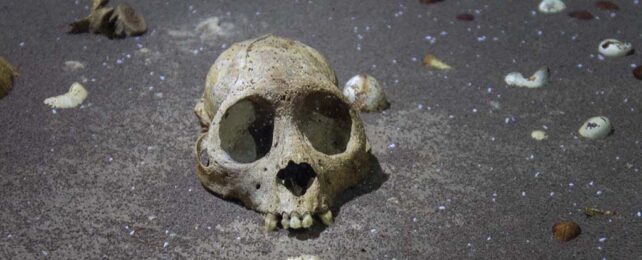 One of the crania found in an underwater cave. (Phillip Lehman)
One of the crania found in an underwater cave. (Phillip Lehman)
A team of cave divers and scientists have uncovered a new cache of extinct monkey fossils submerged deep within the underwater passages of a Caribbean cave.
Forty years ago, only a few well-preserved remains of New World monkeys had been found on the Caribbean islands of Hispaniola and Jamaica, but it was enough to hint at a missing patch of primate evolutionary history.
One of these fossil species was the Hispaniola monkey (Antillothrix bernensis), known only via an ankle bone and a few bits of broken jaw.
But with improvements in cave diving safety and technology, researchers have probed deeper into the islands' flooded cave systems since 2009, with the first A. bernensis skull found in 2011. These submarine caverns, significant to the indigenous Taíno people, are studded with "remarkably well-preserved" fossils that have lain there for millennia, protected from the jostling of waves and animals.
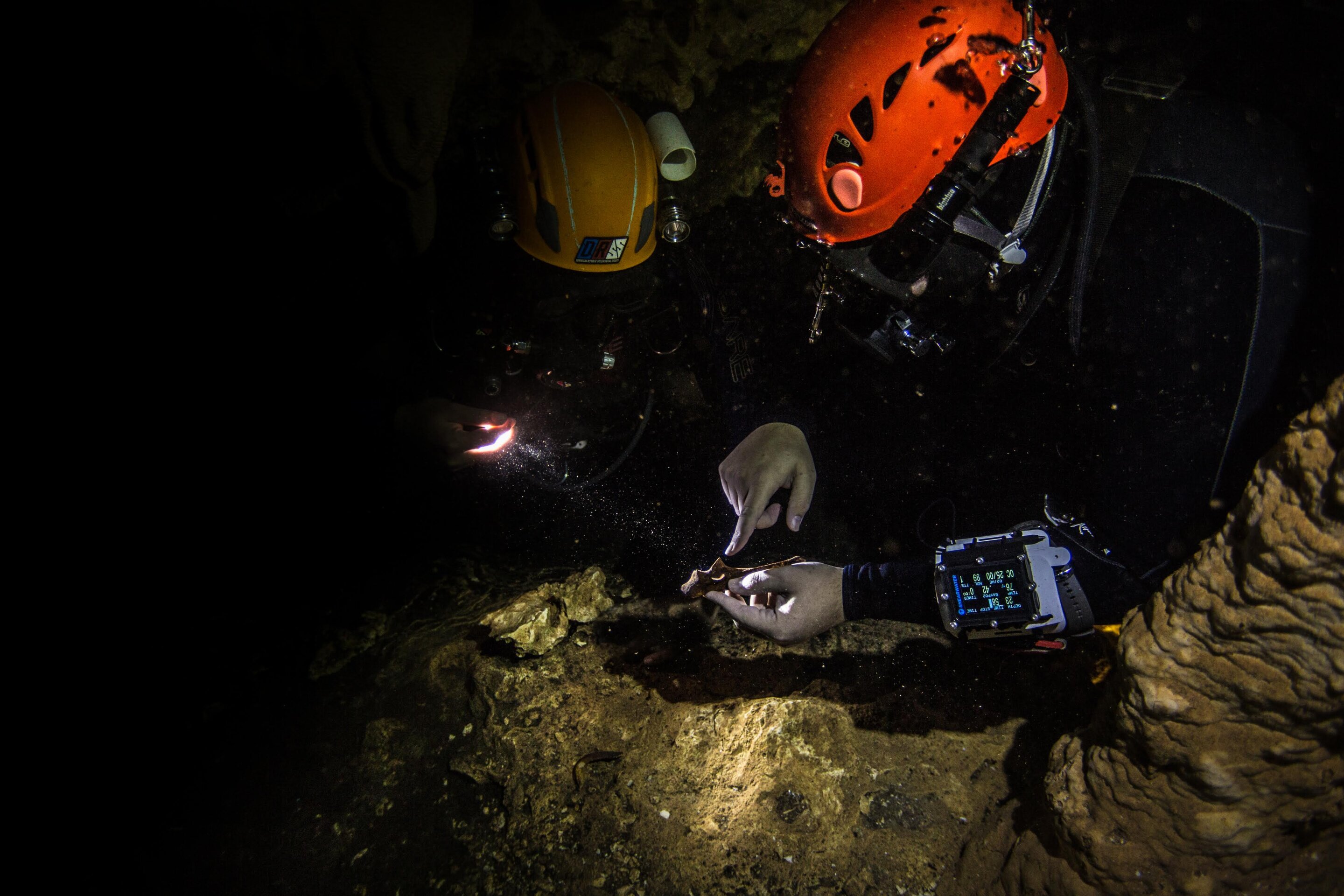 Divers from the Dominican Republic Speleological Society observe Antillothrix fossils underwater. (Zachary Klukkert)
Divers from the Dominican Republic Speleological Society observe Antillothrix fossils underwater. (Zachary Klukkert)The latest finds, out of the Cueva Macho cave system, on the Dominican Republic side of Hispaniola, add new detail to our understanding of the extinct species.
"The number and quality of the Antillothrix crania outlined in this paper allow us to describe the skull completely and understand variation between individuals," says Johns Hopkins University paleobiologist Siobhán Cooke. "This can tell us about the diet and social systems of these animals."
Four new skulls were found in the cave, along with three new mandibles. With these new pieces from the Cueva Macho system, as well as an adult mandible found in a similar cave called Padre Nuestro, the entire Antillothrix bernensis species is now represented by seven near-complete crania, two maxillae fragments, an occipital fragment, five complete mandibles, and dozens of other non-skull bones.
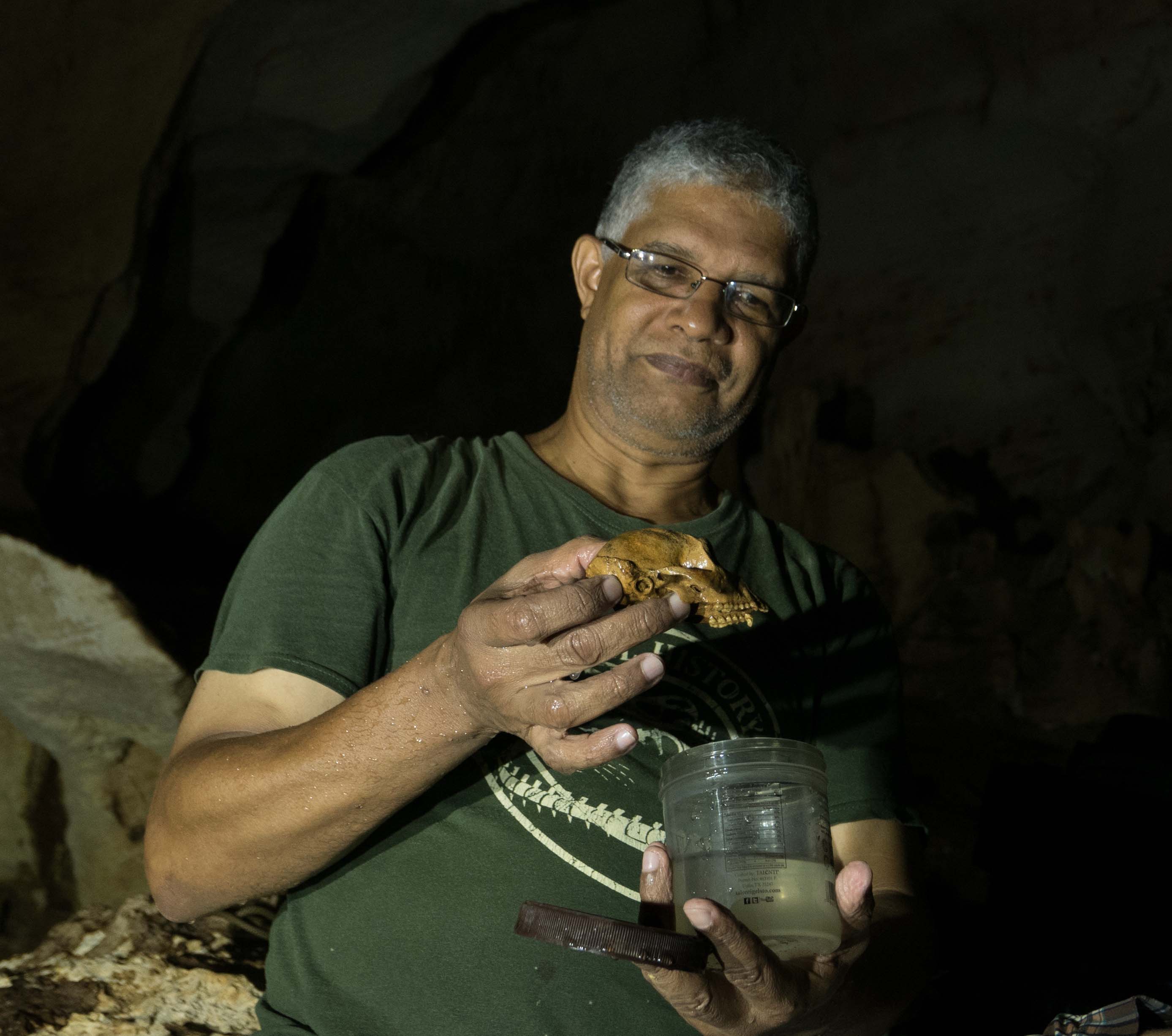 Juan Almonte-Milan inspects one of the new crania found within Cueva Macho. (Phillip Lehman)
Juan Almonte-Milan inspects one of the new crania found within Cueva Macho. (Phillip Lehman)It doesn't sound like much to go off, but this collection – especially the skulls – goes a long way in describing the monkeys' size, diet, sex differences, even social lives. And that's more detail than we have for any other Caribbean monkeys.
"These new specimens, in combination with those previously described, will allow for a detailed study of population- and species-level variation, an exceedingly rare opportunity for any fossil primate," the authors write in their paper.
By analyzing the fossils, the researchers estimate that males and females were of a similar size, up to 3.4 kilograms (around 7 pounds), which suggests mating wasn't overly competitive, and that they may have lived in small monogamous family groups with young depending on their parents.
 This skull and mandible, photographed on the cave floor where they were found prior to collection, may have been resting there for thousands of years. (Phillip Lehman)
This skull and mandible, photographed on the cave floor where they were found prior to collection, may have been resting there for thousands of years. (Phillip Lehman)Their rounded teeth, with small canines, would have suited a diet of fruit, similar to the modern South American titi monkeys, which have similar physical features. And they appear to have had no wisdom teeth, which is rare among primates.
It's a mystery how these monkeys got inside the caves all those years ago, but based on damage to the jaw fossils, Cooke suspects it was not by choice.
"It could be possible that a now extinct owl, which would have been quite large, caught these monkeys and brought them into the cave where it was living --rather than the monkeys falling in at random," she says. "Owl feeding deposits are not uncommon in Hispaniolan caves."
The Hispaniola monkey became extinct within the last 10,000 years, but it's unclear just what drove this species under.
"These fossils help us to better understand the anatomy of Antillothrix, which can help us identify ecological factors that might have predisposed it to extinction… [and] ultimately guide policy for preserving the remaining mammalian diversity on the Caribbean islands and elsewhere " says Cooke.
This research was published in Journal of Human Evolution.

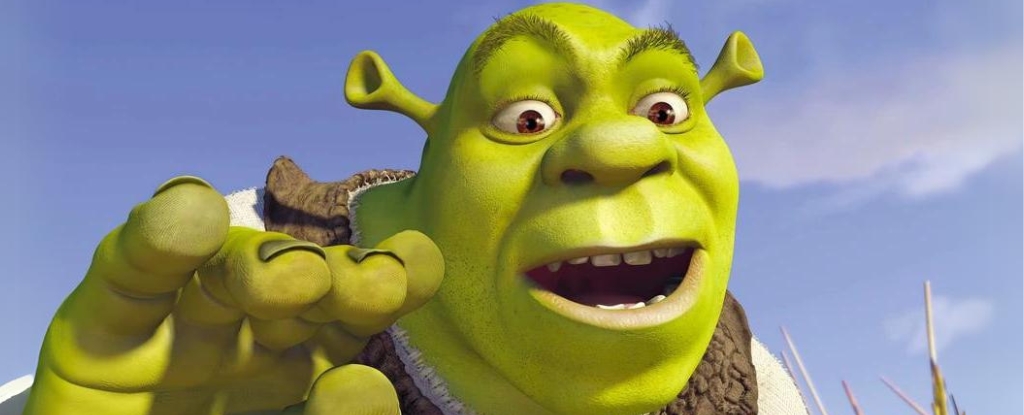
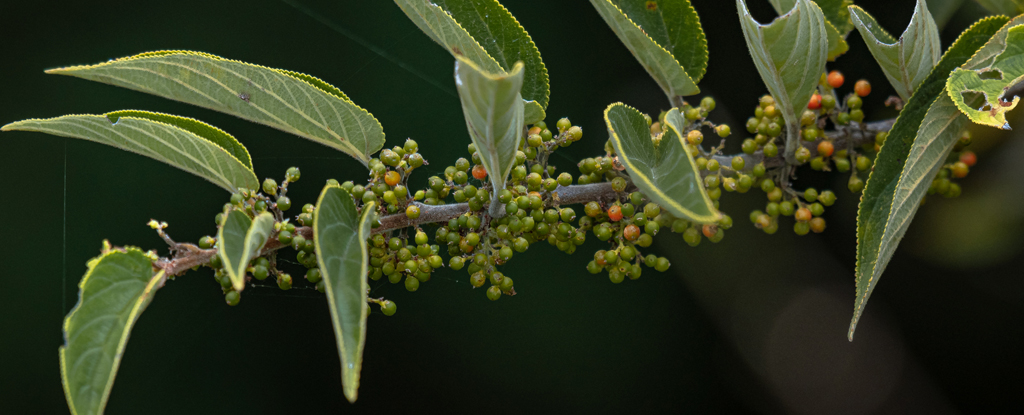












 English (US) ·
English (US) ·